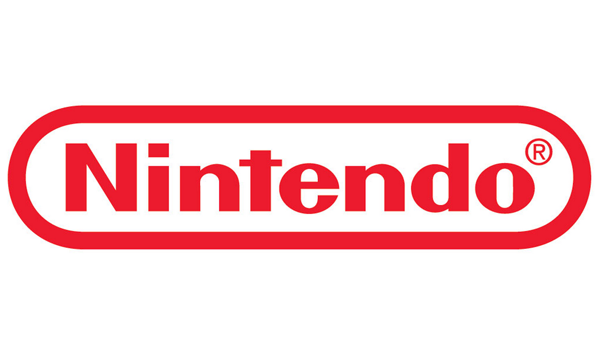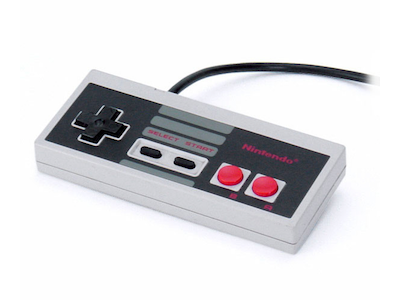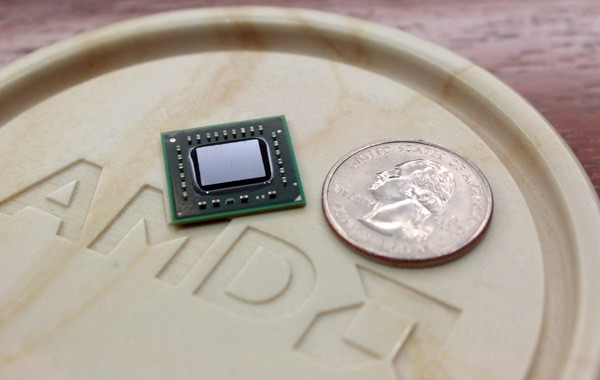Could Nintendo's Mysterious 'NX' Console Run On An AMD Zen APU?
Nintendo revealed its intent to launch a new gaming system more than a year ago, but we still don’t really know much about it. The company, despite revealing that console’s existence, has been secretive about the “new concept” it has been working on. Nintendo has released its latest financial statements, and within the document we found a single line regarding the upcoming console that reveals that we’ll be waiting another year for the new gaming system.
“For our dedicated video game platform business, Nintendo is currently developing a gaming platform codenamed “NX” with a brand-new concept. NX will be launched in March 2017 globally,” read Nintendo’s consolidated financial statements.
The timing of the release window leads us to believe that the next Nintendo console may employ a Zen-based APU built on GlobalFoundries' 14nm FinFET process. We learned in December that AMD's Zen architecture will likely see the light of day between Q3 2016 and Q1 2017, and in March, Robert Hallock, AMD's Head of Global Technical Marketing, revealed that Zen APUs will follow the release of FX prcessors. We don't know when the APUs are expected to launch, but the timing seems to fall into place well for Nintendo's next system.
Third-Party Content Struggles, Abated By x86 Switch?
These two products being released at around the same time isn't our only reason to suspect that Nintendo will make the move to an AMD Zen based APU, either. Over the last few years, Nintendo has been struggling to attract third-party game developers to its Wii U console. Several important game developers never released titles on the Wii U, and most of the major companies that did ended support for the Wii U following the release of the Xbox One and PlayStation 4.
This is mostly due to the less powerful hardware inside of the Wii U, but it's also because of its customized IBM ISA that forces developers to invest more time into porting games to the Wii U. Switching to an x86 Zen-based system would eliminate both of these issues, as Zen is designed for high-performance processing, and its x86 ISA would make games created on the PC, Xbox One or PS4 easily portable to the NX console.
Of course, Nintendo could opt to use Intel's processors instead if it decides to switch to x86, but it is simply more likely that Nintendo will use AMD due to their collaboration on prior consoles.
For more than a decade, all of Nintendo's home game consoles have used graphics produced by AMD (or ATI), starting with the Nintendo Gamecube that was released in 2001. Nintendo also used IBM's fabs to produce the silicon processors in its consoles throughout this time period, up until the acquisition of IBM's fabs by GlobalFoundries, which now produces all of Nintendo's home console processors. Although there is nothing preventing Nintendo from switching to Intel, it is simply more likely that Nintendo will continue its long-term partnership with AMD.
Get Tom's Hardware's best news and in-depth reviews, straight to your inbox.
For now, all we can do is speculate. March 2017 is still a long time to wait for a console that has been teased for over a year already, but considering we don’t really know any details about the forthcoming hardware, nor the “new concept” that Nintendo has been alluding to, it shouldn’t be much of a surprise that the NX won’t land this year.
Follow Kevin Carbotte @pumcypuhoy. Follow us on Facebook, Google+, RSS, Twitter and YouTube.
Kevin Carbotte is a contributing writer for Tom's Hardware who primarily covers VR and AR hardware. He has been writing for us for more than four years.
-
Warsaw Can't wait to see what this will look like. I have actually enjoyed the Wii U a great deal since getting it ~2 years ago or a little longer. To date it is actually my favorite console with it's game library. I have had numerous friends agree with me that there is a lot of negative stigma regarding the console. My angle is that is a very different machine and for a lot of the games on Xbox One & PS4 (which of both I own), I can play majority of those games on my PC. Wii U however not only are different games but a different experience with it's controller. I can't say how many times especially in the beginning I wasn't sure of the pad controller but have grown to love it (especially in a RPG type game), it allows you to use it as a map, inventory, screen switching if you want to play off of it. Hopefully this NX continues what I have enjoyed so much in your current console, especially with the games (this is the most I've owned games on a specific console ever).Reply -
alidan ReplyCan't wait to see what this will look like. I have actually enjoyed the Wii U a great deal since getting it ~2 years ago or a little longer. To date it is actually my favorite console with it's game library. I have had numerous friends agree with me that there is a lot of negative stigma regarding the console. My angle is that is a very different machine and for a lot of the games on Xbox One & PS4 (which of both I own), I can play majority of those games on my PC. Wii U however not only are different games but a different experience with it's controller. I can't say how many times especially in the beginning I wasn't sure of the pad controller but have grown to love it (especially in a RPG type game), it allows you to use it as a map, inventory, screen switching if you want to play off of it. Hopefully this NX continues what I have enjoyed so much in your current console, especially with the games (this is the most I've owned games on a specific console ever).
i want a ps4 for bloodborne
i want a bone for forza (i like real cars with rewind feature that respects my time and money by not telling me "then get a 700$ wheel setup" or "yea the race is hours long, but eff your family when they need you to do something, you got a game to play")
but the wiiu... i want almost every single one of the first party line ups, on top of a few of the more unique third party.
sure the gamepad isnt the best for every game, and with starfox, out right breaks some games, but many that use it as an inventory management or map, i appreciate not needing to take up screen space with that.
other then that, almost everything else worth a damn is on the pc anyway.
unless consoles go full exclusives, they are dead.
it wouldn't shock me if we see sony and microsoft branded computers in the next few years with a locked os, or a locked os setting to give gamers the most hardware power they can. -
P1nky AMD is working on many projects right now to have time to release a Zen APU this early:Reply
- 2 new Polaris GPU dies
- Zen CPUs
- new GPU architecture + HBM2 - Vega
- new APU for PS4K
- probably a 14nm die refresh for Slim PS4
- probably a 14nm die refresh for Slim XBOX One (Microsoft needed a Slim version since day 1)
- probably a new APU for future XBOX One upgrade (like PS4K)
Plus they just released Fiji with a new memory standard.
Too many things on AMD's plate and it's team is not as large as it once was.
-
Samer1970 After the VR gaming entered the business I doubt Nintendo can bring anything original to the gaming experience ...Reply
Nintendo allways won because they made semi VR controller FIRST ...
They made the first analog stick (N64) and then they made the wii controllers ..
and now ? we have VR now and I doubt that Nintendo can add something bigger to the gaming industry , so from now on all will be the same nothing special about any single console.
The NX however has an advantage , it is a new machine and will be more powerful to handle VR better than Xbox one and PS4 ... I just hope Nintendo build a powerful console (GTX 970 power) -
ammaross ReplyAMD is working on many projects right now to have time to release a Zen APU this early:
You talk as if AMD isn't compartmentalized into teams working on various products... The GPU team doesn't work on Zen you know. They can work on more than one project at a time.
- 2 new Polaris GPU dies
- Zen CPUs
- new GPU architecture + HBM2 - Vega
- new APU for PS4K
- probably a 14nm die refresh for Slim PS4
- probably a 14nm die refresh for Slim XBOX One (Microsoft needed a Slim version since day 1)
- probably a new APU for future XBOX One upgrade (like PS4K)
Plus they just released Fiji with a new memory standard.
Too many things on AMD's plate and it's team is not as large as it once was.
-
ammaross Replyit wouldn't shock me if we see sony and microsoft branded computers in the next few years with a locked os, or a locked os setting to give gamers the most hardware power they can.
This is almost the definition of a console.... -
zblade ReplyAfter the VR gaming entered the business I doubt Nintendo can bring anything original to the gaming experience ...
Nintendo allways won because they made semi VR controller FIRST ...
They made the first analog stick (N64) and then they made the wii controllers ..
and now ? we have VR now and I doubt that Nintendo can add something bigger to the gaming industry , so from now on all will be the same nothing special about any single console.
The NX however has an advantage , it is a new machine and will be more powerful to handle VR better than Xbox one and PS4 ... I just hope Nintendo build a powerful console (GTX 970 power)
I dont know, Nintendo is not a company that is afraid to be bold and they are usually rather creative. They had some major fails in the past but majority of the time, they have came out to be the winner. When ever Nintendo mentions the word "New Concept" this always makes me excited, in the past their "New Concept" consoles has completely changed the history of gaming. The original Nintendo, Gameboy and the Wii. The Wii U is a brilliant console, anyone who owns one would tell you this but unfortunately, there isnt that much people (and companies) supporting it.
Not sure about other people here but I am far more interested in this new concept than the NX itself. -
nitrium If this actually happens AMD will be 3 for 3 across all the major consoles that, when you think about it, is actually pretty impressive. It also all but guarantees the company will continue to receive sufficient capital to continue operation. Any competition (albeit a bit lame at the moment) to Intel is a good thing.Reply


